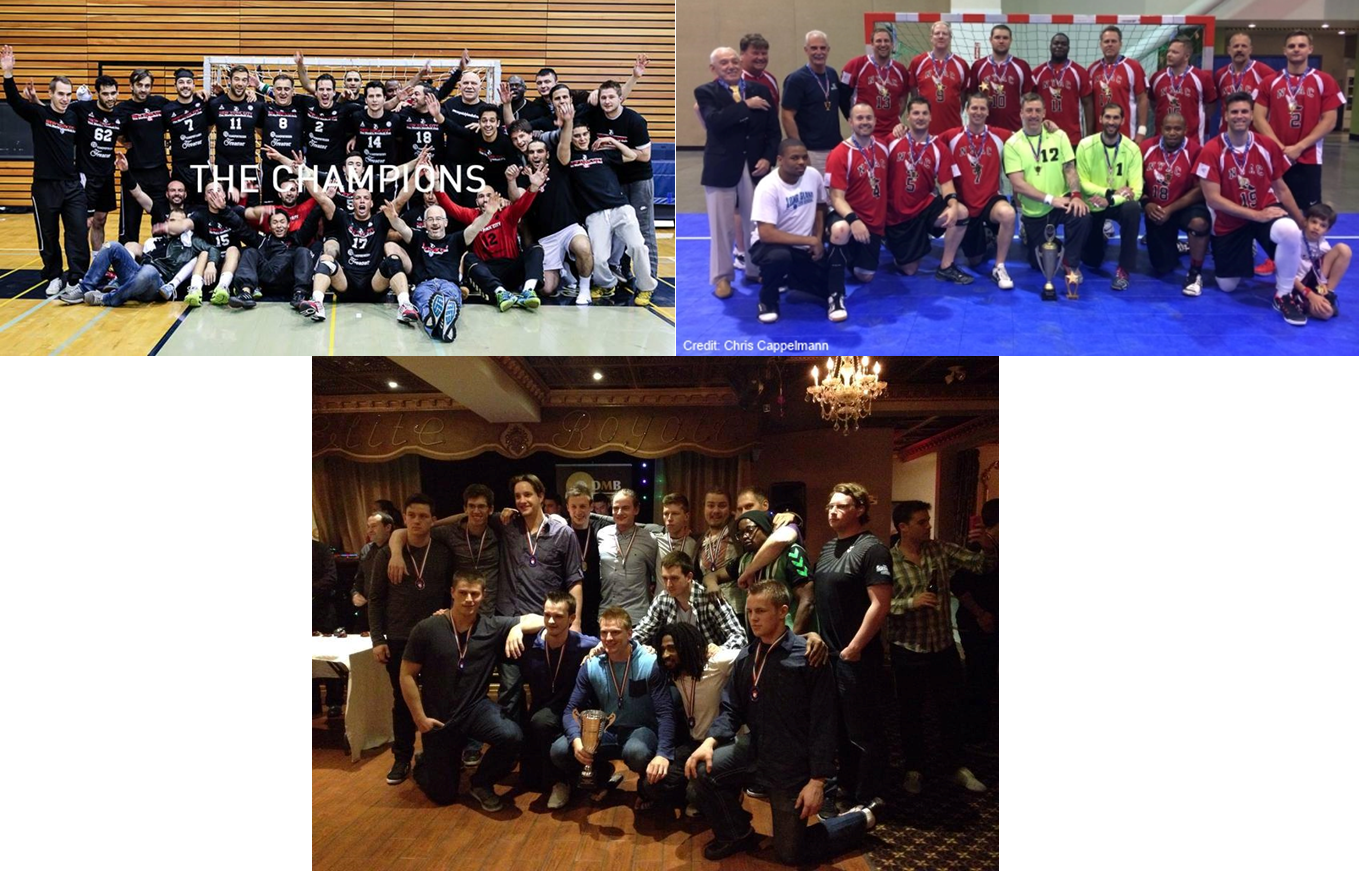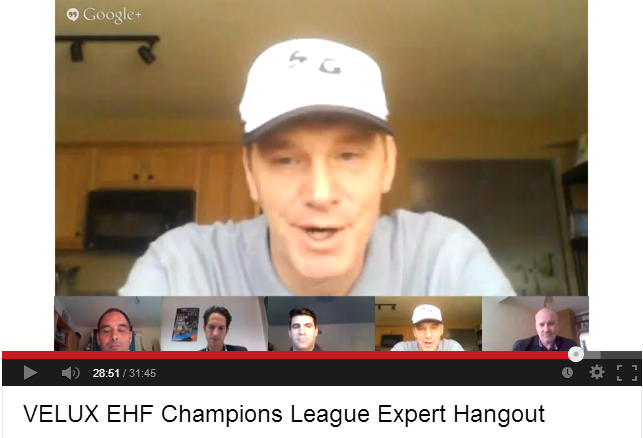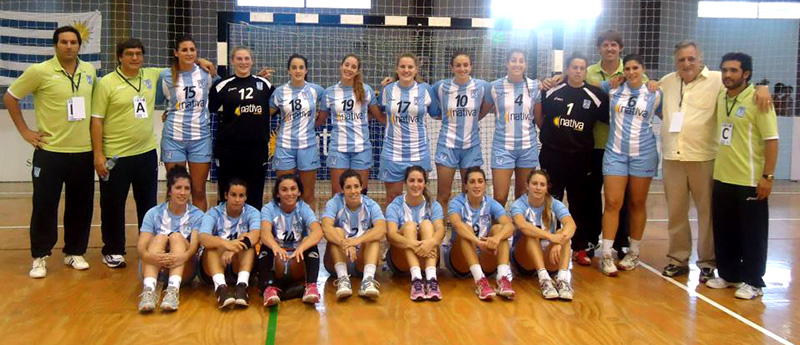Background
USA Team Handball has established Residency Programs for its Men’s and Women’s National Teams at Auburn University in Alabama. Goals for these programs have not been explicitly stated, but based on the majority of the athletes that been recruited the programs appear to have two primary goals: developing new players and national team preparation for competition. These goals, however, often conflict with one another and trying to do both simultaneously with a national team can be problematic.
In particular, the immediate need to prepare for competition results in a competition mindset and a focus on near term performance. At first glance this may seem like an obvious and desired effect. After all, what’s the point of having a national team, if not to do the best we can in competition and ideally win a lot of games? A broader look at the landscape of world handball and the very, very thin U.S. player pool, however, warrants careful consideration of a change in mindset to unequivocally focus the Residency Programs on future player development.
Such a focus would include the following steps
- Establish mission and goals for the Auburn Residency Program that clearly identify its focus on future player development. To the best of my knowledge there is no documentation that fully describes the purpose of the Auburn Residency program. Developing such a document would provide an opportunity to clearly delineate what is desired for the program.
- Rebrand the Residency Programs program to clearly identify them as development programs. Something like the “U.S.A. Team Handball Academy” or “U.S.A. Team Handball Future Development Program” would clearly signal the future developmental focus of the program.
- Decouple the National Team coaches from the development program. To further emphasize the development focus the coaches or training directors administering the program would not be dual hatted as National Team coaches. The administrators would still work closely with the National Team Coaches, but their focus would be developing players for the talent pool; not coaching players in the talent pool.
- Establish an age range for athlete participation. It can be debated as to what this range should be, but I would advocate ages 18-23. While it would be desirous to have even younger athletes in a high school program current U.S. structures will make it nearly impossible to do so. And, while it may be easier to recruit quality athletes at older ages those athletes are very unlikely to meet the “future potential” requisite inherent with a development program.
- Establish a time limit on participation. The goal of the program would be to improve athlete skills to the point where they can play competitively in a professional environment. Historically, athletes introduced to the traditional Residency Program Model improve dramatically as players during their first two years of participation. Eventually, though, they plateau due to the limits of their fellow participants and a lack of competition opportunities. In other words, it’s easier to improve when you’re playing and practicing against more skilled opponents, but more difficult to improve when you’re playing against weaker opponents. At some point athletes would “graduate” and be encouraged to seek better competition overseas. This time limit would also have the added benefit of freeing up spaces to let more athletes participate.
Note: An earlier series of commentaries written in 2009 describes this player development residency model in more detail as well as some problems with the traditional residency model.
Pros
- Broadening of talent pool for years to come. The successful implementation of this program would create a much wider talent pool of prospective athletes. Not only would more athletes be trained up, but since they are younger, they would have more playing years ahead of them. The obvious added benefit of this would be more athletes to choose from for national team competition. A not so obvious benefit will be the trickle down improvement in U.S. based club competitions as players who participate in these programs, but do not quite pan out at the highest level are still more likely to continue playing through their 20’s and early 30’s.
- Improve prospects for American players to have pro careers: If one looks at the world’s top teams it’s plain to see that their rosters are entirely composed of professional athletes. Even the Pan American teams that the U.S. competes against for Olympic berths have rosters with a number of athletes playing professionally (some at the highest levels) in Europe. Professional athletes will almost always defeat amateurs and if the U.S. can get more athletes overseas it will greatly improve national team prospects. A U.S. Team Handball Academy could be the vehicle to boost skills of young athletes to the point where European clubs show interest.
- Ensures focus on development. While it can be argued that the current Residency Program could still be directed to focus on younger player development the establishment of a Handball Academy and its associated guidelines would guarantee that focus. Older athletes simply could not be recruited and the coaches running the program would not have conflicted priorities.
Cons
- Weakening of current National Team prospects. Moving forward with this change in direction will immediately result in weaker U.S. National Teams at international competitions. Practicing on a regularly basis in one location creates a more cohesive team as players become very familiar with each other’s skills and abilities. Additionally, Residency Programs create a team bonding that can provide an additional advantage in competition. Any slim hopes the U.S. had of 2016 Olympic qualification are probably eliminated and 2020 Olympic qualification prospects would also be weakened as this change in direction would probably take several years to bear fruit.
- Lack of support for older National Team players. This change in direction would likely end the careers of many older National Team players as many of them are either not skilled enough or do not desire to live overseas where they can continue their development as players.
Risks
- Inability to recruit desired athletes. Probably nothing challenges the implementation of this youth based movement more than the reality that recruiting athletes at younger ages with the desired athletic ability will be challenging in the U.S. The top athletes at those ages generally play another sport and USA Team Handball will be competing against colleges that can offer either full or partial scholarships. This risk is so pronounced that additional actions to address this recruiting challenge should probably be implemented in conjunction with or prior to establishing a future player focused residency program. (Separate recruiting initiative: Link <to be written>)
Costs
- Residency Program Costs. With the Residency Programs already in place this primarily is a change in focus/rebranding and could be executed for little or no cost. A level of support for athletes is already in place and while more is desired, it could continue at the same lever for the younger athletes envisioned. In terms of administration salaries are already being paid for 2 National Team coaches. These coaches are already providing training instruction and could simply be rehired as Sports Academy coaches or administrators. Additionally, as the focus would be entirely on player development USA Team Handball could also consider having just one coach so another salary could be freed up for other requirements like recruiting. Finally, while this is development program a handful of trips for competition is still desired. Ideally, these would take advantage of IHF challenge competitions where financial support is provided
- National Team Costs. By combining competition preparation with player development USA Team Handball was benefiting from certain cost efficiencies. With the decoupling of these two roles either more funding for National Team support will be needed or support to National Team will have to decrease. Assuming a decrease in funding, possible cuts include making the National Team coaching positions part time volunteer positions, eliminating all trips for friendly competitions, and even requiring athletes to fully fund or partially fund trips for qualification competitions. These are not pleasant possibilities to contemplate, but if the U.S. wants to get serious about future player development funding should be diverted from senior team programs.
- Recruiting Costs. It’s hard to see this program being successfully implemented without more resources being devoted to recruiting efforts. This may necessitate the hiring of a full time recruiting coordinator or require having another staff member devote significant man hours to this task. Additionally, there will likely be some travel costs if recruiting is to be more effective.
Timing for Implementation
This change could, in theory, be done immediately, but probably should be phased to coincide with upcoming Olympic and World Championship qualification. An implied (if not explicit) promise of support has been made to a number of athletes that don’t fit the development concept (i.e., they are significantly older) and an immediate change in focus would be unfair. Both, the men’s and women’s program can qualify for the 2016 Olympics by finishing first or second (if 2016 Olympics host Brazil finishes first) at the 2015 PANAM Games which take place in Toronto next July. While it’s unlikely either team will qualify they should be given that opportunity with the support that the current Residency Program model provides for training. Should they fail to qualify for the Olympics next July or even fail to qualify for the PANAM Games (via a qualification tournament in January, 2015) USA Team Handball will have a logical break point for redirecting the Residency Programs.
Another logical break point for the Women will coincide with the 2015 World Championships. Due to Brazil’s winning of the 2013 World Championships, Pan America will have an unprecedented 6 spots for the 2015 World Championships to be played in December, 2015. The U.S. will have a decent chance of securing one of those spots at the 2015 Pan American Championships and this may support keeping the Women’s team intact through that tournament. The Men’s next World Championship qualification even will not take place until January, 2016 at the earliest, so it should be less of a consideration.
Overall Assessment
Well, it should come as no surprise that I am fully in favor of taking this bold step. Ideally, it would be better to implement such a program after we have further developed our collegiate club competitions and established some sort of High School competition, even if only in one U.S. city. Further, it would be better to have funding to support a recruiting budget. All of these shortcomings makes the chance of success somewhat iffy, but with the Auburn program in place it makes little sense to wait for those things to happen first.
Finally, the current state of our talent pool makes near term success very unlikely. If U.S. qualification prospects were more realistic I could enthusiastically support an all out run for 2016 qualification. The reality, however, simply doesn’t support it. Even 2020 is a bit of a stretch, but I think with a switch to a development focus, we could make a respectable run. And, more importantly start to populate our national team rosters with athletes that could really make a difference in 2024, when the U.S. might very well be hosting an Olympics.

























